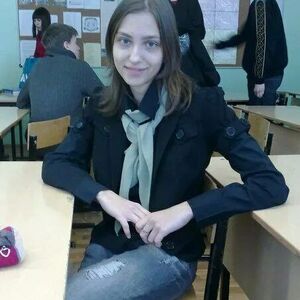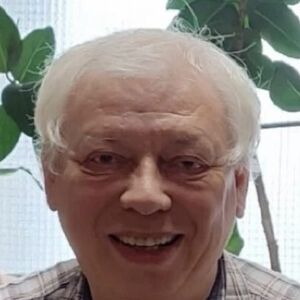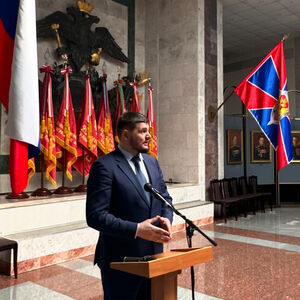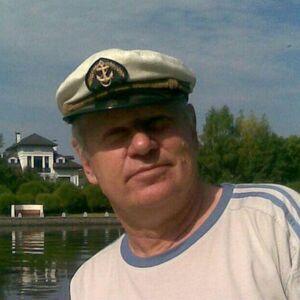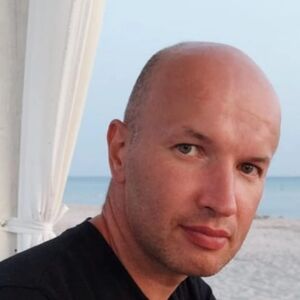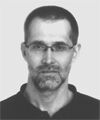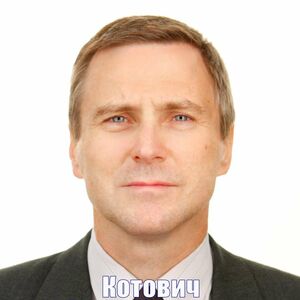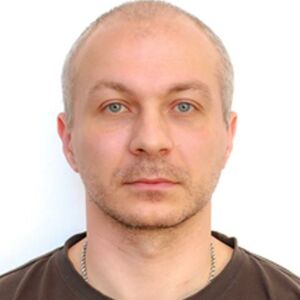Диссертация (1335891), страница 26
Текст из файла (страница 26)
Electromyographic evidence of reduced muscle activity when ULF-TENS is applied to the Vth and VIIth cranial nerves / G. Kamyszek, R. Ketcham,R. Garcia Jr., J. Radke // J. Craniomandib. Pract. – 2001. – Vol. 19, № 3. – P. 162168.175. Kawazoe, Y. The slopes of the fatigued muscle voltage tension curves decreased toa greater degree with percutaneous stimulation than with rest alone / Y. Kawazoe,H. Kotani, T.
Mitani [et al.] // Arch. Oral Biol. – 1981. – Vol. 26. – P. 796-801.163176. Keefe, F.J. Correlation of pain behavior and muscle activity in patients withmyofascial pain-dysfunction syndrome / F.J. Keefe, E.A. Dolan // J.Craniomandib. Disord. Facial Oral Pain. – 1984. – Vol. 2, № 4. – P. 181-184.177. Kirveskari, P. Association between craniomandibular disorders and occlusalinterferences / P. Kirveskari, P. Alanen, T. Jämsä // J. Prosthet. Dent. -1989. – Vol.62, № 1. – P.
66-69.178. Kirveskari, P. Association between craniomandibular disorders and occlusalinterferences in children / P. Kirveskari, P. Alanen, T. Jämsä // J. Prosthet. Dent. –1992. – Vol.67, № 5. – P. 692-696.179. Kirveskari, P. Effect of elimination of occlusal interferences on signs andsymptoms of craniomandibular disorder in young adults / P. Kirveskari, Y. LeBell,M. Salonen [et al.] // J. Oral Rehabil.
– 1989. – Vol. 16, № 1. – P. 21-26.180. Kirveskari,P. Occlusal adjustment and the incidence of demand fortemporomandibular disorder treatment / P. Kirveskari, T. Jämsä, P. Alanen // J.Prosthet. Dent. – 1998. – Vol. 79, № 4. – P. 433-438.181. Klasser, G.D. Oral appliances in the management of temporomandibular disorders/ G.D. Klasser, C.S. Greene // Oral Surg. Oral Med. Oral Pathol.
Oral Radiol.Endod. – 2009. – Vol. 107, № 2. – P. 212-223.182. Kloprogge, M.J. Disturbances in the contraction and co-ordination pattern of themasticatory muscles due to dental restorations. An electromyographic study / M.J.Kloprogge, A.M. van Griethuysen // J. Oral Rehabil. – 1976. – Vol. 3, № 3. – P.207-216.183.
Korbmacher, H. Correlations between dentition anomalies and diseases of thepostural and movement apparatus – a literature review / H. Korbmacher, G.Eggers-Stroeder, L. Koch, B. Kahl-Nieke // J Orofac Orthop. – 2004. – Vol. 65, №3. – P. 190-203.184. Kotani, H. Quantitative electromyographic diagnosis of myofascial paindysfunction syndrome / H. Kotani, Y. Kawazoe, T. Hamada, S. Yamata // J.Prosthet. Dent. – 1980. – Vol.
43, № 4. – P. 450-456.164185. Kroon, G.W. Electromyographic evidence of local muscle fatigue in a subgroup ofpatients with myogenous craniomandibular disorders / G.W. Kroon, M. Naeije //Arch. Oral Biol. – 1992. – Vol. 37, № 3. – P. 215- 218.186. Kumar, V.N. Transcutaneous nerve stimulation in rheumatoid arthritis / V.N.Kumar, J.B. Redford // Arch. Phys. Med. Rehabil. – 1982. – Vol. 63, № 12. – P.595-596.187.
Kuttila, M. Efficiency of occlusal appliance therapy in secondary otalgia andtemporomandibular disorders / M. Kuttila, Y. Le Bell, E. Savolainen-Niemi [et al.]// Acta Odontol. Scand. – 2002. – Vol. 60, № 4. – P. 248-54.188. Kuwahara, T. Chewing pattern analysis in TMD patients with unilateral andbilateral internal derangement / T. Kuwahara, R.W. Bessette, T.
Maruyama // J.Craniomandib. Pract. – 1995. – Vol. 13, № 3. – P. 167- 172.189. Kuwahara, T. Clinical classification of the patterns of mandibular movementsduring mastication in subjects with TMJ disorders / T. Kuwahara, S. Miyauchi, T.Maruyama // Int. J.
Prosthodont. – 1992. – Vol. 5, № 2. – P. 122-129.190. Larsson, E. Dummy- and finger-sucking in 4-year-olds / E. Larsson // Swed. Dent.Res. – 1975. – Vol. 68, № 6. – P. 219-224.191. Le Bell, Y. Effect of artificial occlusal interferences depends on previousexperience of temporomandibular disorders / Y. Le Bell, T. Jämsä, S.
Korri [et al.]// Acta Odontol. Scand. – 2002. – Vol. 60, № 4. – P. 219-222.192. Li, J. The electromyographic activity of masseter and anterior temporalis duringorofacial symptoms induced by experimental occlusal highspot / J. Li, T. Jiang, H.Feng [et al.] // J. Oral Rehabil. – 2008. – Vol. 35, № 2. – P. 79-87.193.
Liu, J.K. Association of functional malocclusion with temporomandibulardisorders in orthodontic patients prior to treatment / J.K. Liu, M.Y. Tsai // Funct.Orthod. – 1998. – Vol. 15, № 3. – P. 17-20.194. Liu, Z.J. Electromyographic examination of jaw muscles in relation to symptomsand occlusion of patients with temporomandibular joint disorders / Z.J. Liu, K.Yamagata, Y. Kasahara, G. Ito // J.
Oral Rehabil. – 1999. – Vol. 26, № 1. – P. 3347.165195. Lloyd, A.J. Surface electromyography during sustained isometric contractions /A.J. Lloyd // J. Appl. Physiol. – 1971. – Vol. 30, № 5. – P. 713-719.196. Lous, L. Postural activity in subjects with functional disorders of the chewingapparatus / L. Lous, A. Sheikholeslam, E.
Moller // Scand. J. Dent. Res. – 1970. –Vol. 78, № 5. – P. 404-410.197. Lundh, H. Anterior repositioning splint in the treatment of temporomandibularjoints with reciprocal clicking; comparison with a flat occlusal splint and anuntreated control group / H. Lundh, P.-L.
Westesson,, S. Kopp, B. Tillström // OralSurg. Oral Med. Oral Pathol. – 1985. – Vol. 60, № 2. – P. 131- 136.198. Lundh, H. Disc-repositioning onlays in the treatment of temporomandibular jointdisk displacement: comparison with a flat occlusal splint and with no treatment /H. Lundh, P.-L. Westesson, S. Jisander, L. Eriksson // Oral Surg. Oral Med. OralPathol. – 1988. – Vol. 66, № 2. – P. 155-162.199. Lunn, D. Foot asymmetry and cognitive ability in young children / D.
Lunn //Unpublished master's thesis. – Univer. of Western Ontario, London, Ontario,Canada, 1987.200. LVI Global Core 1 Instructional Manual: Advanced Functional Dentistry. ThePower of Physiologic based Occlusion // LVI. – 2001. – 237 p.201. Maeda, Y. Release of GABA and activation of GABA(A) in the spinal cordmediates the effects of TENS in rats / Y. Maeda, T.L. Lisi, C.G. Vance, K.A.Sluka // Brain Res. – 2007. – Vol. 1136, № 1. – P. 43-50.202. Magnusson, T. A longitudinal epidemiologic study of signs and symptoms oftemporomandibular disorders from 15- 35 years of age / T. Magnusson, I.Egemark, G.
Carlsson // J. Orofac. Pain. – 2000. – Vol. 14, № 4. – P. 310-319.203. Makofsky, H.W. The influence of forward head posture on dental occlusion / H.W.Makofsky // Cranio. – 2000. – Vol. 18, № 1. – P. 30-39.204. Mao, Y. Attitude of Chinese orthodontists towards the relationship betweenorthodontic treatment and temporomandibular disorders / Y. Mao, X.H. Duan //Int. Dent. J. – 2001.
– Vol. 51, № 4. – P. 277-281.166205. Matsumoto, M. A study of signs and symptoms of temporomandibular dysfunctionin individuals with normal occlusion and malocclusion / M. Matsumoto, A.Matsumoto, A. Bolognese // Cranio. – 2002. – Vol. 20, № 4. – P. 274-281.206. Mayer, D. Antagonism of acupuncture analgesia in man by the narcotic antagonistnaloxone / D.
Mayer, D. Price, A. Rafli // Brain Res. – 1977. – Vol. 121, № 2. – P.368-372.207. McCall, W.D. Jr. A textbook of occlusion / W.D. McCall Jr. – Carol Stream, IL:Quintessence, 1988.208. Melzack, R. Pain mechanisms: a new theory / R. Melzack, P.D. Wall // Science. –1965. – Vol. 150, № 3699. – P. 971-979.209. Milanov, I. Trigemino-cervical reflex in patients with headache / I. Milanov, D.Bogdanova // Cephalalgia. – 2003.
– Vol. 23, № 1. – P. 35-38.210. Modeer, T. Sucking habits and their relation to posterior cross-bite in 4-year-oldchildren / T. Modeer, L. Odenrick, A. Lindner // Scand. J. Dent. Res. – 1982. –Vol. 90, № 4. – P. 323-328.211. Moller, E. Deliberate relaxation of the temporal and masseter muscles in subjectswith functional disorders of the chewing apparatus / E. Moller, A. Sheikholeslam,L. Lous // Scand. J.
Dent. Res. – 1971. – Vol. 79, № 4. – P. 478-482.212. Moller, E. Response of elevator activity during mastication to treatment offunctional disorders / E. Moller, A. Sheikholeslam, L. Lous // Scand. J. Dent. Res.– 1984. – Vol. 90, № 1. – P. 37-46.213. Monaco, A. Effects of transcutaneous electrical nervous stimulation onelectromyographic and kinesiographic activity of patients with temporomandibulardisorders: a placebo-controlled study / A.







